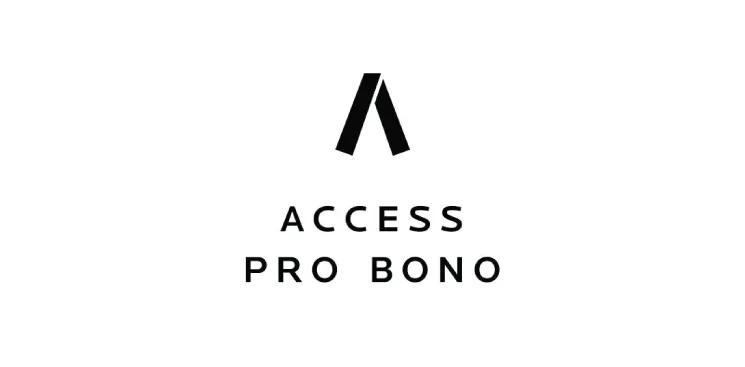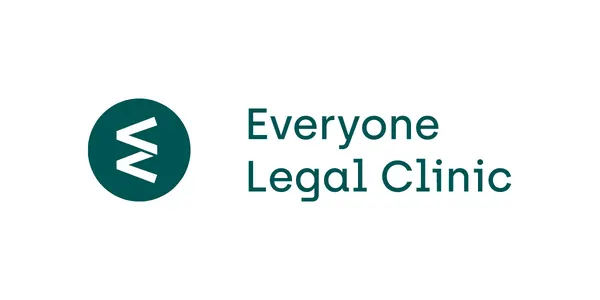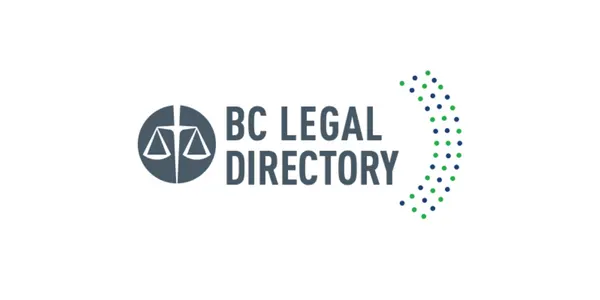
While biking, I was hit by a car. Can I get money to help recover from my injuries?
Helmet — check. Bike lights and reflectors — check. You head out for your evening ride. As you approach an intersection, you swerve to avoid a car that blows through a stop sign. You tumble off your bike and end up with a bruised rib and cuts to your hands and arms. Learn your rights if you’re injured in a bike accident.
What you should know
"While I was biking, a car in the lane beside me moved into my lane without signalling, and struck me. The driver was on their cellphone — they clearly hadn’t noticed me! I ended up with a broken arm, plus cuts and bruises. I was glad to learn I was eligible to receive accident benefits through ICBC."
– Surinder, Nanaimo, BC

Who’s considered a cyclist
Under BC law, you’re a cyclist if you’re riding a “cycle,” which is a human-powered device with wheels. That includes a human-powered bike or motor-assisted bike (that is, an electric bike or e-bike), but it doesn't include a wheelchair, skateboard, or skates.
How bike accidents happen
A bike accident can involve a collision with another cyclist or a pedestrian, or a solo encounter with a pothole or debris on the road. It might be caused by a bike that is defective or in poor repair. Usually, though, the most serious bike accidents involve motor vehicles. Drivers in these situations might be distracted by their phones, impaired by alcohol or drugs, or not following the rules of the road such as speed limits or traffic signs.
But most of the time, bike accidents happen at intersections and in residential areas. If you’re on your bike, the three most common types of accidents caused by a motor vehicle are:
an oncoming driver turns left in front of you (such as in this court case)
a driver on a cross street pulls into the intersection directly into your path (as happened here)
a driver passes you and then turns right in front of you (as happened here)
An accident can also happen when a driver or passenger unexpectedly throws open the door of their parked car in front of you (called “dooring”), such as happened in this court case.
Even if the driver is at fault or partly at fault (as in each of these cases), there’s no guarantee you’ll be able to get compensation from the driver. We explain this in a moment. But you are very likely able to get accident benefits through ICBC.
As a cyclist, if you’re injured in a collision with a motor vehicle — or trying to avoid one — you can make a claim for accident benefits through ICBC. Accident benefits can help you with medical and personal care costs, as well as wage loss and other setbacks.
Who qualifies for accident benefits
All that’s required is that you qualify as an “insured” — to do so, you or a member of your household needs to have a valid BC driver’s licence or an ICBC Autoplan insurance policy. You can qualify for accident benefits through ICBC whether or not the accident was your fault. Below, under work out the problem, we explain how to apply.
Types of benefits available
ICBC's accident benefits cover medical and rehabilitation care costs, including those for physiotherapy, chiropractic, or massage therapy. Also included are costs related to counselling, dental care, medication, and medical devices or equipment.
How ICBC deals with medical benefits
ICBC pays your medical practitioners directly. The amounts that will be covered are set out in the Enhanced Accident Benefits Regulation. After the first 12 weeks, you’ll need to be able to prove (with medical evidence, for example) that you need more treatments to recover.
If you can’t work after a bike accident, you can seek wage loss benefits. These benefits start eight days after the accident and cover 90% of your net income — up to a maximum of $100,000 gross income.
If your injuries are life-altering and you can’t go back to work, you can get wage loss benefits for as long as you need them.
If you have access to other wage loss benefits or insurance coverage
Accident benefits coverage from ICBC is secondary to other wage loss benefits that may be available to you. These may include an employer plan, another insurer, or employment insurance. You’ll need to apply for those other benefits first before wage loss benefits will be paid under ICBC’s coverage.
As long as you have supporting evidence of your injuries and their impact, ICBC can also provide you with other types of accident benefits, such as caregiver benefits and personal care assistance benefits (if you need help managing the activities of daily living). ICBC explains the full range of accident benefits available.
If you’ve been hit by a vehicle, there are some limited circumstances where you can sue the driver and claim compensation. For example, if the driver was criminally convicted of impaired driving, you can sue them for damages.
If the collision was caused by another cyclist, you can sue them under their homeowner or renter’s insurance policy. You can also sue third parties (such as a vehicle manufacturer) if their actions have contributed to your accident.
If your biking accident happened on public property, you can sue the municipality in which the accident occured.
Assuming you can make a claim for damages
When you sue someone, you have to prove they are legally responsible for your injuries. If you’re successful, you can be paid damages for your losses. This involves figuring out what your injuries have cost you monetarily, physically, and mentally. It includes assessing your non-pecuniary damages, which are meant to compensate you for the pain and suffering your injuries have caused you, as well as the loss of enjoyment of life. We explain how personal injury damages work, and how to calculate them.
If you’re partly or fully at fault for your accident
If there’s something you did or didn’t do that contributed to your bike accident or the severity of your injuries, you could be partly or fully responsible. In law, this is called contributory negligence. This can affect any damages you receive.
For example, in this case, the court reduced damages by 50% after finding an injured cyclist 50% at fault for the accident. In this case, a cyclist who rode through a marked crosswalk without looking, where he was struck by a vehicle, was found fully at fault and not entitled to any damages.
Work out the problem
Select the steps that make sense in your situation
If you are injured in a cycling accident, you don’t have to go through the suggested steps in order. You can start with any of them.
As soon as possible (or at least within 24 hours) after a bike accident, you should see a medical professional — even if you feel okay. Your injury may be more serious than you think.
It’s ideal if you can visit your doctor, as they know your medical history. Otherwise, go to a hospital or clinic. Report that your injuries are a result of the accident. A medical professional can document your injuries, treatment, and prognosis.
The importance of your medical records
Your medical records will play a critical role in proving the bike accident caused your injuries. They’re also key in showing the severity and duration of your injuries, and how they impact your life. All this will affect the damages you might get.
If your bike accident involves a collision with a motor vehicle driver, call the police. If the accident is serious, they’ll attend the scene. Explain what happened and file an accident report. You’ll get a police file number. Keep this so that you can ask for a copy of the accident report in the future.
You’ll also need to report the accident to ICBC by phone. Again, don’t delay: call within a reasonable period of time, typically 24 hours. Then you’ll need to provide ICBC with a written report describing the accident and your injuries within 30 days of the accident. In the meantime, they may ask you to bring your bike in for inspection.
If your bike accident happened on public property (like a road or sidewalk), you need to report it in writing to the appropriate municipality within two months.
If you were involved in a collision with a vehicle, you can apply to ICBC for accident benefits. To do so, you’ll need to fill out an insurance claim application (CL22). Then, upload it online or mail or fax it to ICBC as soon as possible after your accident.
If you disagree with ICBC’s decisions about accident benefits
After ICBC makes a decision about your accident benefits, you have options. If you disagree with their decision, you can try discussing your concerns with the adjuster or manager. If there’s no resolution, you can go through ICBC’s internal claims decision review process, failing which you can:
file a complaint with the ICBC Fairness Officer
file a complaint with the BC Ombudsperson
file an action with the Civil Resolution Tribunal
It’s important to document your injuries and what happened as best you can, as soon as you can.
Take photos. Take photos or a video of your injuries, the condition of your bicycle, clothing, footwear, and any eyewear, as well as any hazard that caused your accident, and the general scene where the accident occurred.
Make detailed notes. Write down the name and contact information of the other motorist or cyclist, their licence plate number (if any), and their driver’s licence number (if any). You should also record details about your injuries and how the accident happened, including the time of day, date, and location of your accident, the speed you were travelling, and the weather.
Talk to any witnesses. If someone saw the incident, get their name and contact information. Ask them for a written statement of what they saw and heard. If they took a video or have dashcam footage, ask them to share it with you.
Stay organized. Keep your notes and other evidence in one place, like in a file folder or on your phone.
Don’t share information about your biking accident on social media
You may be tempted to post information about your accident and injuries on social media. But it could later be used against you, so it’s best not to.
If your injuries are moderate to serious, you should consider contacting a lawyer. A lawyer can explain your legal options. They’ll also tell you how long you have to take certain steps. For example, if your biking accident happened on public property, you need to report it in writing to the municipality within two months.
Many personal injury lawyers will take bike accident cases on a contingency fee basis. This means you don’t have to pay any legal fees during the case. Instead, any fees are paid based on an agreed-on percentage of the money they recover for you. You do have to pay out-of-pocket expenses (such as for medical records, long-distance calls, and so on). In a personal injury case involving a cyclist and a motor vehicle, the maximum contingency fee percentage is 33 1/3%.
See below under who can help for options for legal advice.
Once you’ve obtained legal advice, you can try resolving the matter through mediation. This involves meeting with a neutral third party (a mediator). They’ll work to help you and the other party reach an agreement. Mediation is often much quicker and less expensive than legal action. You can try it either before or after starting a legal action, or both.
Finding a mediator
On the Mediate BC website, you can search for a mediator based on the community you live in and the type of problem you have. Selecting personal injury under practice areas after clicking on advanced filter options can help narrow your search.
Depending on who or what caused your bike accident and injuries, you may be able to bring a legal action (see the section above about making a claim for damages).
If you or a lawyer you’ve hired can prove your claim, you may be able to get a damage award to cover your medical costs, out-of-pocket costs, any lost income, and pain and suffering resulting from the injury. We have more on how much a personal injury claim might be worth.
If your claim is for less than $5,000, you can bring it to the Civil Resolution Tribunal. This online system encourages a collaborative approach to resolving disputes.
If your claim is between $5,000 and $35,000, you can bring a legal action in Small Claims Court. This is faster and less complicated than suing in the British Columbia Supreme Court. But if your claim is for over $35,000, you’ll need to start a court action in BC Supreme Court.
Common questions
Generally speaking, you have a two-year window to bring a legal action arising from a bike accident. This limitation period, as it’s called, starts once you discover your legal claim. A claim is said to be discovered on the first day you knew, or reasonably ought to have known, that you suffered an injury that was caused by the party you’re suing.
If your accident involves a municipality, the time limit to take action can be much shorter. An example would be if the accident was caused by a pothole on a municipal street. To make certain types of claims against the municipality, you have to notify them in writing within two months. To start a legal action for personal injury against the municipality, the two-year limitation period typically applies. But, where a city’s maintenance policies are involved, the limitation period is six months.
ICBC’s Enhanced Care insurance coverage came into effect on May 1, 2021. If your accident happened before May 1, 2021, you can apply for accident benefits through ICBC and sue the at-fault person for compensation for pain and suffering, other damages, and reimbursement of expenses. Learn more about personal injury damages and how to calculate them.
In BC, every motorist is required to carry a minimum of $200,000 in third party liability coverage. This means that if the accident wasn’t your fault, the cost of repairs to your bike will be covered by this part of the motor vehicle driver’s insurance policy. If your bike was totalled, you’re entitled to be compensated for the replacement value of your bike.
Gather your original purchase receipt for your bike and receipts for any improvements you made to the bike (such as new tires, brakes, or a bike seat). Then provide a copy of your receipts, as well as estimates for the repair or replacement costs, to ICBC. Once they’ve looked at your bike and paperwork and given their approval, you can take steps to have your bike repaired or buy a new one.
If you’re a cyclist or pedestrian who’s been hurt after an accident with a cyclist, the at-fault cyclist’s auto insurance policy (if they have one) doesn’t cover your cycling accident injuries unless a car, truck or other vehicle was involved. Instead, you may be able to claim compensation through the at-fault cyclist’s homeowner or renter’s insurance policy.
Bike accidents are common. Every year, 1,600 cyclists are injured in collisions on BC roads. Despite this, there are things you can do to stay safe, including:
be visible by wearing bright, reflective clothing and putting lights on the front and back of your bike, helmet, pedals, and wheels
learn and follow BC’s cycling laws, including those about wearing a helmet, signalling when you’re going to stop or turn, and not riding on sidewalks or in crosswalks
be aware of who and what is around you, especially when approaching an intersection, changing lanes, or riding near cars
use bike lanes where available and cycle in areas where there’s enough light to see where you’re going
wear any corrective lenses required
keep your bike in good working condition
Who can help

Access Pro Bono's Free Legal Advice
Volunteer lawyers provide 30 minutes of free legal advice to people with low or modest income.

Access Pro Bono’s Everyone Legal Clinic
Clinicians provide affordable fixed-fee services on a range of everyday legal problems.

Lawyer Referral Service
Helps you connect with a lawyer for a complimentary 15-minute consult to see if you want to hire them.

BC Legal Directory
Search for a lawyer by community or legal issue. From the Canadian Bar Association, BC Branch.

